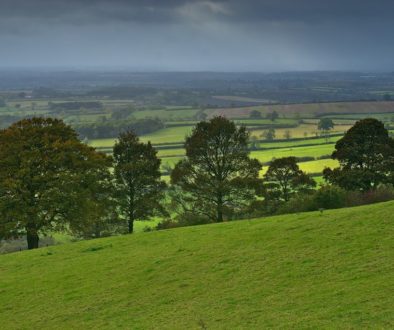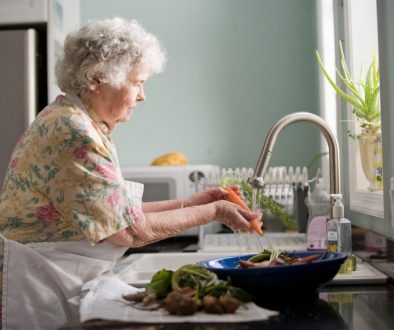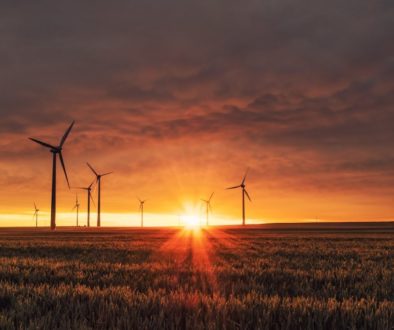Is rural life so great outdoors?
A growing body of evidence demonstrates the contribution of green spaces to mental and physical health and wellbeing – from reducing symptoms of stress to increasing levels of communal activity and social capital. But it also suggests that some people are absent from or failing to reap the benefits from engaging with the natural environment. Jessica Sellick investigates.
While the notion that getting outside in the fresh air is good for you will be common-sense for many RSN readers – this view can be traced back to the Victorian era with Crystal Palace advertised as ‘the fresh air suburb above the valley fogs’; and to David Hume the Scottish philosopher, historian, economist, and essayist who acknowledged the impact of green spaces on people’s health when he lobbied Edinburgh Council in 1724 to build a path up Calton Hill “for the health and amusement of the inhabitants”. More recently, fresh air has been described by “wonder drug” by Macmillan Cancer Support with research from the British Medical Association (BMA) finding it saves lives, treats diseases (e.g. diabetes, stroke) and 39 other medical conditions all with no harmful side effects.
Outdoor physical activities such as walking, running and cycling, therefore, are being posited a crucial means of addressing Government targets of promoting physical activity as a means to better health (i.e., guidelines specify that adults should do at least 2.5 hours of moderate aerobic activity a week or an hour and 15 minutes of vigorous activity).
Yet until more recently there has been little policy in place encouraging health practitioners to be innovative in including green space in their therapy options (e.g. allotments, environmental volunteering, green gyms). However, when NHS England negotiated the new contract with GPs in 2013, the requirement for doctors to ask patients about their exercise levels was removed; with surgeries arguing it was time consuming, bureaucratic and getting in the way of GPs treating patients.
Although obesity prevalence in children has been found to be higher in those living in urban areas than rural areas, a study published in the Journal of Transport & Health in August 2014 seems to contradict the view that living in rural spaces makes you fitter and healthier, with researchers finding it can actually increase the rate of obesity (perhaps due to the tendency of rural dwellers to use their car more and walk less?).
While it is possible to lead an active, healthy lifestyle in both rural and urban areas, how can we ensure the countryside continues to be a place to play, enjoy nature, think and make life better? What does a natural health and wellbeing service have to offer rural England? I offer three points:
Firstly, while there is growing recognition of the contribution that the natural environment makes to improved health and well-being outcomes, public policy continues to transact illness (NHS/health), wellbeing (Local Authorities), protecting the environment and delivering economic growth.
The Natural Environment White Paper (NEWP) revealed that 54% of the adult population visit the natural environment every week. However, the Paper recognised that not everyone has equal opportunity to access the benefits of a health natural environment. The document therefore contained key reforms for reconnecting people and nature including making local green space more available, getting more school children outdoors; and a Green Areas Designation to empower communities to protect local environments. In monetary terms – a study for the UK National Ecosystem Assessment (NEA) estimated 3+ hours of physical exercise a week provided cost savings of £12-£39 per person to the NHS; and having a view of green space from your house versus no view delivered a monetary return of £135-£452.
There has been an abundance of reports covering health priorities such as obesity, insufficient levels of physical activity, long term health conditions, mental health (including dementia) as well as signalling health inequalities. The Marmot Review (2010) ‘fair society, healthy lives’, for example, set out the positive impact nature has on people’s physical and mental health: “high quality natural environments foster healthy neighbourhoods; green spaces encourage social activity and reduce crime. The natural environment can help children’s learning, whilst low engagement is likely to lead to impacts such as lower involvement in wider issues of sustainability” – through to the UCL Institute of Health Equity’s report (2014) ‘Natural solutions for tackling health inequalities’ which explores ways of reducing systematic variation in the provision, quality and use of the natural environment and make the most of the health-giving aspects of using natural environments.
These reports highlight the roles of Public Health England, Natural England and the Local Government Association in developing leadership around this agenda. More recently, the NHS Five Year Forward View (2014) suggests the future of this treasured institution involves empowering patients and engaging communities to get serious about prevention. And a landmark report by Public Health England (PHE) finding lack of exercise to be as dangerous as smoking (contributing to one in six deaths) and the population is 20% less active than it was in 1961. PHE says changes in the trends are needed to protect the welfare state from collapsing under the burden of lifestyle diseases and has launched a new initiative ‘everybody active, every day’.
These reports have led to a plethora of initiatives such as the Natural Health Service, a spin out of a Natural England and Department of Health project founded on the principal that contact with the natural environment has quantifiable health benefits. This has led to the promotion of Outdoors for All, Green Exercise and Walking for Health. Current research/studies including ‘fields of dreams’ enable people of all ages in 155 parishes in Devon to experience sport and Monitoring of Engagement with the Natural Environment (NEME) survey to provide baseline and trend data on how people use the natural environment.
Yet many of these initiatives seem to favour densely populated urban areas.
Secondly, and in a rural context, this information reveals there is a lack of data at a national level on the ‘state of the countryside’ and who has access to it/owns it? Mapping this information would help better target funding and ensure that policy interventions are more effective. A t a micro-level this involves understanding the type of facilities and level of provision available. This would, in turn, reveal the barriers to participation. For example, some villages do not have facilities or have a small village hall that limits the activities that can take place. In other instances rural dwellers have to travel (by car if public transport isn’t available) to access facilities such as leisure centres, woodland. Many policy and decision makers – committed to Evidence Based Policy Making – are not aware that access to outdoor and indoor environments can be a challenge for many rural residents.
Thirdly, many rural communities are already joining up activity on countryside access and management to improve public health. Incredible Edible Todmorden, for example, is a community group which grows and campaigns for local food. Established by residents in 2008, IET volunteers plant food crops at 40+ public locations throughout the village; offering locals and visitors the chance to pick their own fresh fruit and vegetables, and it’s all free. Or the work of Dementia Adventure, a Community Interest Company seeking to test a number of large scale interventions that improve access to the natural environment for those living with dementia.
Where next? Further headway can be made around making the economic as well as health and wellbeing case of getting people outdoors. The formation of Health and Wellbeing Boards, many of whom are investigating ways to pool budgets and share resources between partners alongside the activities of Local Authorities, Local Enterprise Partnerships and Local Nature Partnerships, provide new opportunities to link the natural environment to services (e.g. economic development, planning, access/recreation). At a local level this will involve getting communities more involved, as well as addressing issues such as competing demands and public liability.
Jessica is a researcher/project manager at Rose Regeneration; an economic development business working with communities, Government and business to help them achieve their full potential. She has undertaken a variety of projects on the natural environment and countryside management. These include: Preparing the Yorkshire Dales Local Food Map (celebrating the distinctiveness of the Dales landscape); considering how the Common Agricultural Policy (CAP) can be reformed to benefit rural communities; and supporting community groups in understanding natural resource management. More recently, Jessica has been working with Areas of Outstanding Natural Beauty Partnerships and National Park Authorities on the economic value and wellbeing contributions made by protected landscapes.
Jessica can be contacted by email at jessica.sellick@roseregeneration.co.uk or telephone 01522 521211. Website: www.roseregeneration.co.uk; Twitter: @RoseRegen


